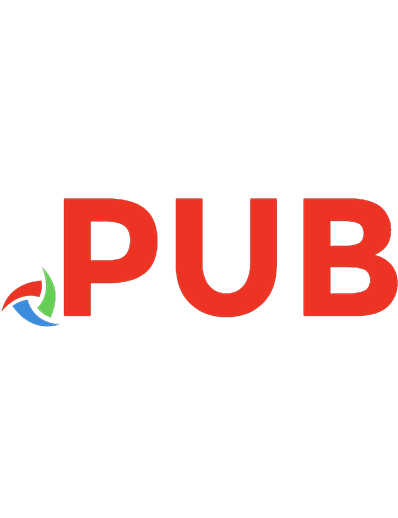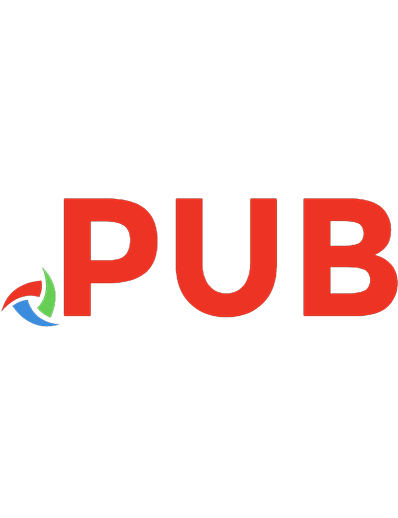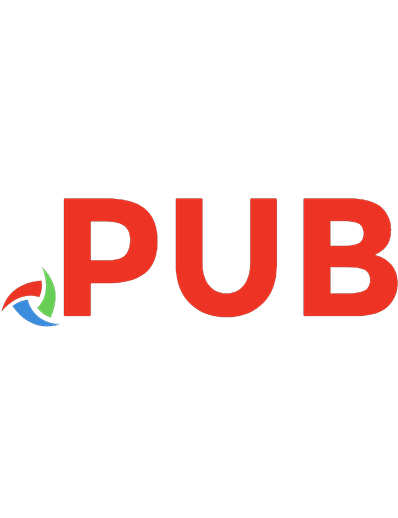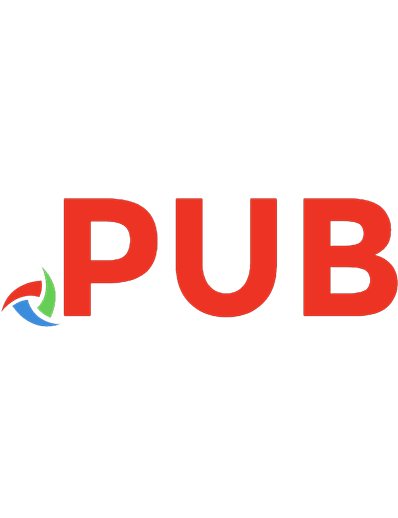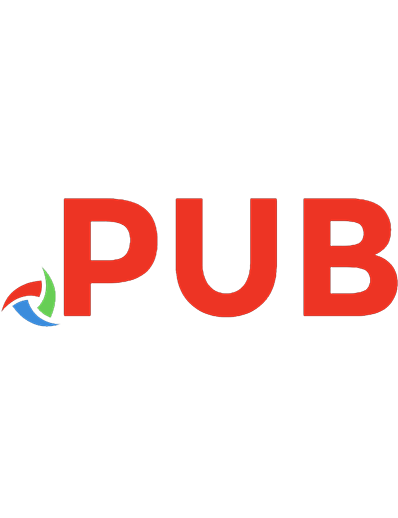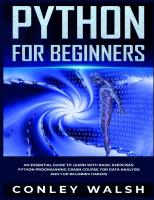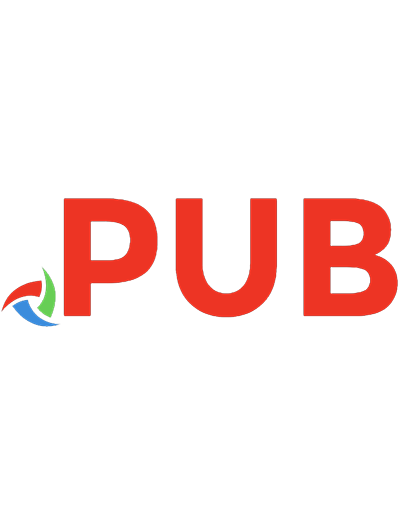Phyton Programming Bible: [3 in 1] The Complete Crash Course to Learn and Explore Python beyond the Basics. Including Examples and Practical Exercises to Master Python from Beginners to Pro
Master Python programming and develop a highly profitable skill with this complete beginner’s crash course on coding! Ar
439 72 8MB
English Pages 182 Year 2023
Table of contents :
Introduction to Python
What is Python?
Brief history and development of Python
Features and strengths of Python
Why learns Python?
Real-world applications of Python
Career opportunities with Python:
Installing Python
Windows:
macOS:
Linux:
Configuring the Python Environment:
Python Development Environments
Choosing the Right IDE for Your Needs
Chapter 1: Basic Concepts
Data Types
Variables
Operators
Basic Data Structures
Control Flow
Functions and Modules
Functions and Parameters
Defining and Calling Functions
Positional and Keyword Arguments
Returning Values
Multiple Return Values
Built-in Functions
Importing Modules
Overview of Python Modules
Importing Modules in Your Code
Creating and Using Your Own Modules
Creating a Custom Python Module
Using a Custom Python Module
Organizing Your Code with Modules
Chapter 2: Input and Output
Standard Input/Output
Basic input/output with Python
Reading and writing to the console
Reading and Writing Files
Reading text and binary files with Python
Writing data to files
Error Handling
Handling exceptions with try/except blocks
Raising your own exceptions
Chapter 3: Object-Oriented Programming
Classes and Objects
Methods and Attributes
Inheritance
The Benefits of Inheriting Properties and Methods From Parent Classes
Creating child classes
Polymorphism
Using polymorphism in Python
Polymorphism in Inheritance
Overriding Methods
Chapter 4: Advanced Topics
Regular Expressions
Overview of Regular Expressions:
Using Regular Expressions in Python:
Lambda Functions
Introduction to Lambda Functions:
List Comprehensions
Creating Lists with List Comprehensions:
Advanced List Comprehension Techniques:
Decorators
Overview of Decorators in Python:
Creating and Using Decorators:
Generators
Overview of Generators in Python:
Creating and Using Generators:
Chapter 1: Python Libraries and Applications
NumPy
Overview of NumPy:
Using NumPy for numerical computations:
Pandas
Overview of Pandas
Using Pandas for data manipulation and analysis:
Matplotlib
Overview of Matplotlib:
Creating data visualizations with Matplotlib:
Flask
Overview of Flask
Building web applications with Flask
Django
Overview of Django
Building web applications with Django
Chapter 2: Working with APIs
What are APIs?
Types of APIs
HTTP Requests and Responses
Overview of HTTP protocol
Sending and receiving HTTP requests with Python
JSON Data Format
Introduction to JSON
Parsing and creating JSON data in Python
Accessing APIs with Python
Using the Requests library to access APIs
Authentication with APIs
Examples of Popular APIs
Twitter API
OpenWeatherMap API
Google Maps API
Chapter 3: Data Analysis and Visualization
Reading Data with Pandas
Importing data into Pandas
Working with different data formats
Data Cleaning and Preparation
Handling missing data
Data normalization and scaling
Exploratory Data Analysis
Summary statistics and visualizations
Data profiling and exploration techniques
Visualizing Data with Matplotlib and Seaborn
Creating charts and graphs with Matplotlib
Using Seaborn for advanced visualization
Basic Statistical Analysis with Python
Descriptive Statistics
Hypothesis Testing
Chapter 4: Machine Learning with Python
Overview of Machine Learning
Types of Machine Learning Algorithms
Supervised and Unsupervised Learning
Supervised Learning
Unsupervised Learning
Difference between Supervised and Unsupervised Learning
Scikit-Learn Library
Using Scikit-Learn for machine learning tasks
Examples of using Scikit-Learn for machine learning tasks
Common Machine Learning Algorithms
Applications of Machine Learning in Python
Chapter 5: Web Scraping with Python
What is Web Scraping?
How to Use Python for Web Scraping
Requests Library
BeautifulSoup Library
Scraping Data from Websites
Step 1: Send a GET Request
Step 2: Parse the HTML
Step 3: Extract Data
Data Extraction and Cleaning
Regular Expressions
String Manipulation
Chapter 6: Data Science with Python
Introduction to Data Science
Working with Data Frames in Python
Data Visualization with Matplotlib and Seaborn
Exploratory Data Analysis and Statistical Analysis
Linear and Logistic Regression Analysis
Chapter 7: Web Development with Python
Introduction to web development with Python
Creating dynamic websites using Flask and Django
Building web applications with Python
Chapter 8: Testing and Debugging in Python
Why Testing and Debugging is Important
Types of Testing in Python
Unit Testing with Pytest
Debugging Techniques in Python
Profiling Python Code
Chapter 9: Networking with Python
Introduction to networking in Python
Basic networking concepts
Socket programming with Python
Client-server communication in Python
Networking libraries in Python (e.g. Twisted, Scapy)
Chapter 10: Game Development with Python
Introduction to Game Development with Python
Pygame library for Game Development
Creating Games with Python
Physics Simulation in Python Game Development
Game Design Principles and Strategies
Chapter 11: Cybersecurity with Python
Introduction to Cybersecurity with Python
Cryptography and Encryption in Python
Network Security with Python
Web Security with Python
Threat Detection and Response with Python
Chapter 12: Big Data with Python
Introduction to Big Data and Python
Processing Big Data with Python
Working with Hadoop and Spark using Python
Storing and Managing Big Data with Python
Data Visualization and Analysis for Big Data with Python
Chapter 13: Natural Language Processing with Python
Introduction to natural language processing:
Text pre-processing and cleaning with Python:
Sentiment analysis with Python:
Named entity recognition with Python:
Topic modeling with Python:
BOOK 3: MASTERING PYTHON LIKE A PRO
Chapter 1: Deep Learning with Python
Introduction to deep learning
Neural network basics
Keras library for deep learning with Python
Convolutional neural networks for image processing
Recurrent neural networks for natural language processing
Chapter 2: Cloud Computing with Python
Introduction to Cloud Computing with Python
Cloud Computing Platforms (e.g. AWS, Google Cloud, Azure)
Managing Cloud Infrastructure with Python
Deploying Python Applications to the Cloud
Big Data Processing in the Cloud with Python
Chapter 3: GUI Programming with Python
Introduction to GUI programming with Python
Tkinter library for GUI programming with Python
Building desktop applications with Python
Designing user interfaces with Python
Event-driven programming in GUI programming with Python
Chapter 4: Mobile App Development with Python
Introduction to Mobile App Development with Python
Kivy Library for Mobile App Development with Python
Building Cross-Platform Mobile Apps with Python
User Interface Design for Mobile Apps with Python
Mobile App Deployment with Python
Chapter 5: Future Work and Next Steps
Review of Python Basics
Tips for Continued Learning and Practice
Future Directions and Applications for Python
Applications of Python in different fields:
Appendix: Python Reference
Python Version
Syntax
Data Types
Variables
Operators
String Methods
Date and Time
File Handling
Exception Handling
Conclusion
![Phyton Programming Bible: [3 in 1] The Complete Crash Course to Learn and Explore Python beyond the Basics. Including Examples and Practical Exercises to Master Python from Beginners to Pro](https://dokumen.pub/img/200x200/phyton-programming-bible-3-in-1-the-complete-crash-course-to-learn-and-explore-python-beyond-the-basics-including-examples-and-practical-exercises-to-master-python-from-beginners-to-pro.jpg)

